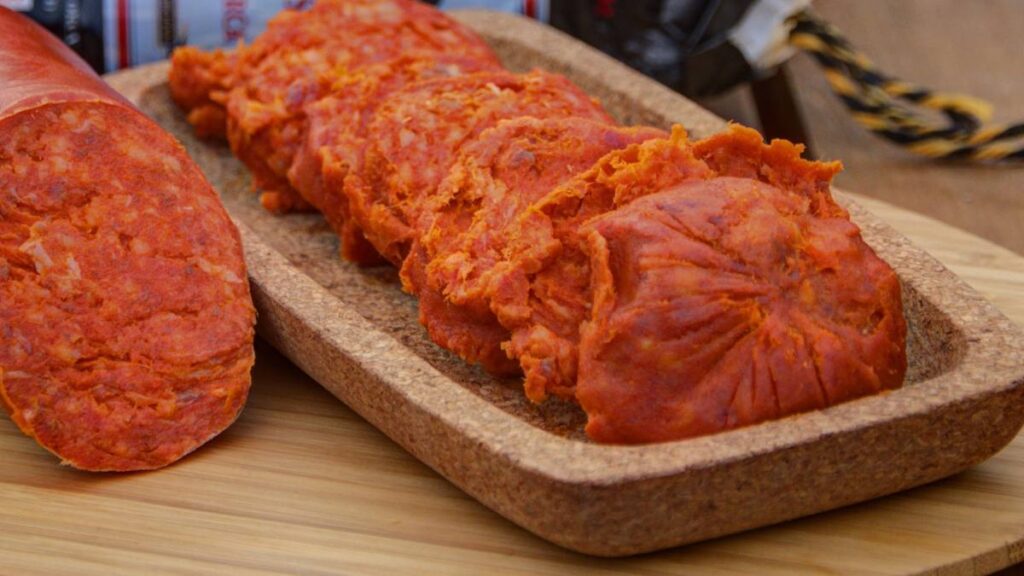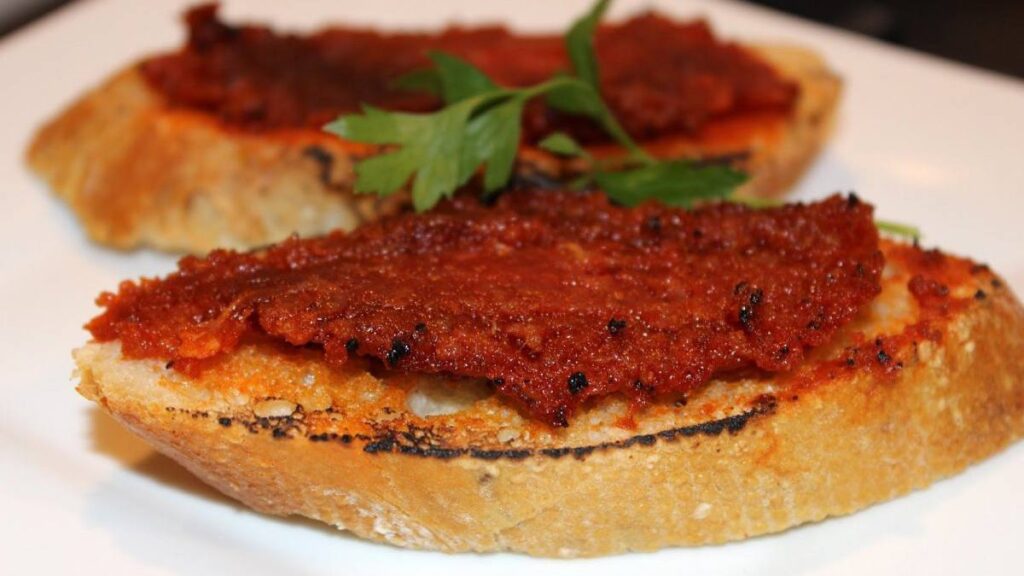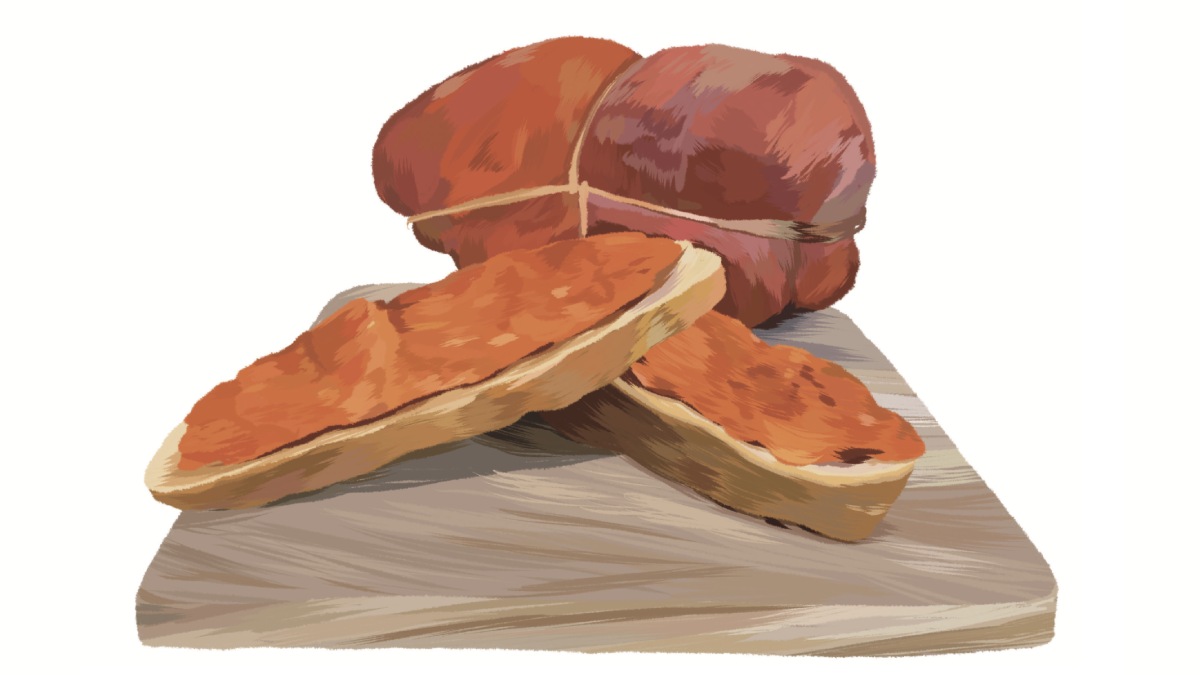Click here to read the Spanish version.
To look for the origin of sobrasada you have to go to the sea of the Latin sails, the Mare Nostrum. If you head for Calabria, at the tip of the boot of the Italian peninsula, you will reach Spilinga, in the instep. There, under the rigor of its dry and sultry summers, with the smell of bergamot, the ‘nduja calabresa was born, a sausage made with the fatty parts of the pig and with diavolicchio, the hot chili of Calabria, as well as other spices, among which paprika stands out. The ‘nduja, a delicacy of the solar Italia dei salumi, is eaten spread on pieces of bread or as a base for pasta sauces, such as ragu. Presumably it was not originally red, since paprika (obtained from drying and grinding certain varieties of red peppers, especially ñora and paprika), which originated in Mexico, was unknown in Europe at the beginning of the 15th century.
Calabria was not always the idyllic postcard of the Mezzogiorno with its beaches and mountains, with palm trees, vines, olive trees and forests of green chestnut trees. When malaria struck its flat coastal territories, it fell under the rule of the Aragonese dynasty. As the Kingdom of Mallorca was also part of the Crown of Aragon, cultural and commercial exchanges between the two regions accelerated. In a letter from King Martin I of Aragon, the monarch made a request to the Sicilian court for food, which included the “sobressades” (the same as today you would ask a friend or relative to bring in your suitcase after a visit to the Balearic Islands). From Valencia it went to Mallorca. This is more than likely the origin of the sobrasada’s journey to Spain. In fact, the word sobressade comes from the Italian word “sopressata” which, in turn, derives from “sopressa”, which means minced, applied to sausage meat.

In the Balearic Islands, the charcuterie tradition of sausages has existed since the times of ancient Rome. They were, as today, meats seasoned with spices and aromatic herbs that were introduced into natural animal casings. Of course, the consumption of pork was interrupted in the Taifa of Mallorca during the Caliphate, and would only be recovered with the conquest of the island of Mallorca for the Christian kingdoms by King James I of Aragon in the 13th century. Written references to sobrasada do not appear until the 17th century and it would not be until the 18th century, with the extension of the use of paprika, which Christopher Columbus brought three centuries earlier as an offering to the Catholic Monarchs and which gives sobrasada its characteristic red color. Until then, it must have been white.
There is no written record of the origin of ‘nduja, which followed its way to Naples, from where it jumped to the aristocratic tables in the seventeenth century. But far from Italy, in our Balearic Islands, the sobrasada that Martin I the Elder liked so much followed a different course from its Italian ancestor. Although the locals recognize the foreign origin of this delicacy, they claim that their sausage is much more aromatic and tasty. Its red color, it has already been said, comes from paprika, a loan from the New World. And healthier, since the paste is made from lean pork.
Pork was already consumed in the Balearic Islands since Talayotic times, the prehistory of Mallorca and Menorca. The custom reached the Mallorcan Romans, who in the 2nd century B.C. left testimony of their taste for pork. And not just any pig, but the porc negre mallorquí (black pig), an autochthonous breed that allows a sobrasada to obtain the specific denomination of origin (although in Menorca the less fatty porc faixat is preferred).
TRADITIONAL PROCESS

Sobrasada spread throughout the Balearic archipelago. And in every corner a way of making it was coined. In Ibiza, tradition dictates that sobrasada is made with the most noble parts of the pig: loins, hams and shoulders. Once boned, they are chopped and left to macerate with the right proportion of bacon, Ses Salines salt, black pepper, paprika and a natural preservative based on rosemary. It is then left to cure in its own casing, to obtain an unctuous and velvety sobrassada. On the White Isle, sobrassada payesa is the most authentic, and the use of citró de matances, the local paprika, is a must. The Menorcan has less fat and is less spicy. They also differ in terms of presentation, that is, depending on where it is stuffed: rizada (with large intestine), culana (with portions of the rectum), poltrú (with the cecum, weighing up to several kilos), bufeta (with bladder) or the bisbe, the largest of all (stuffed with stomach) are some of the most characteristic sobrassadas.
Fried or grilled, or spread on bread with some sugar, it is a popular food. There is the bocadillo de pan payés with sobrasada and crumbled tuna with its oil and a few slices of tomato, typical of Menorca; or the llonguet with sobrasada and Mahón cheese.
Despite its simplicity, the thing does not end in the llesca de pa con sobrassada, but serves to fill ensaimadas and empanadas, to prepare the illustrious Mallorcan snails, for the sauce of stews, in soups and rice, or mixed with honey, in a happy contradiction. A total food, like the Mediterranean.

